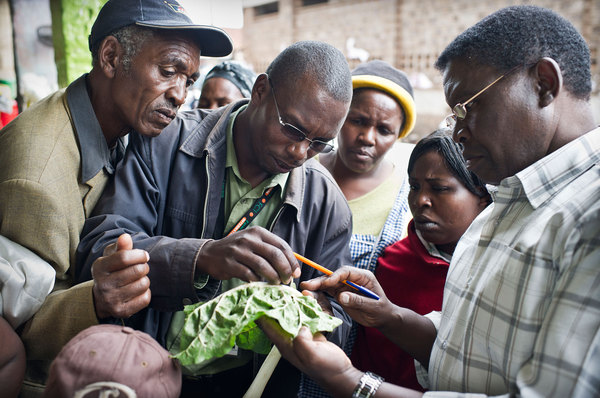Ozone pollution negatively affects crop yields
It is predicted that, as levels of the air pollutant, ozone, continue to increase, they will be highest in areas of the world with the most rapidly increasing population levels. This is bad news for crop growers in developing countries, as it has been found that high concentrations of ground-level ozone can have a negative…
The papaya mealybug reaches Malaysia
Distribution of the papaya mealybug (screenshot from the interactive distribution map at www.plantwise.org) © CABI Native to Mexico, the papaya mealybug (Paracoccus marginatus) is controlled in its home range by endemic natural enemies, like the parasitoid Acerophagus papayae. When the papaya mealybug invaded a number of countries in the neotropical region, including the Caribbean, US…
Update: Plant Health News (09 Nov 11)
Here’s a taste of some of the latest news stories about plant health: Chile starts kiwifruit inspections for Psa-V disease Fresh Fruit Portal, 8 November 2011 Crop parasite may spread with global warming Business Weekly, 7 November 2011 Preventing Epitrix potato flea beetles FWi – Arable News, 7 November 2011 How parasites modify plants to…
Which is the world’s worst agricultural pest?
They have caused famines that killed millions; they have precipitated the release of hundreds of megatonnes of carbon; they even turned the UK into a nation of tea-drinkers. And today they are still destroying around 40 per cent of the crops that we grow worldwide. Agricultural pests and diseases have a lot to answer for.
Understanding and managing aflatoxicosis outbreaks in Kenya
Aspergillus flavus and A. parasiticus are important fungal pathogens that infect a wide range of cereals, oil seeds and nuts. They produce toxic metabolites called aflatoxins (mycotoxins with carcinogenic and teratogenic properties) that can contaminate food products. Although strictly regulated around the world, aflatoxin contamination in developing countries is poorly regulated. In addition, limited management…
Colorado Beetle Threatening Potato Crops in Finland
Finland is experiencing a longer and warmer summer than normal which is threatening their potato crops. The warmer temperatures have led to increases in the prevalence of the Colorado potato beetle which has been attempting to establish in Finland for the past decade. The Colorado potato beetle itself is a highly effective reproducer and necessitates…
Update: New Pest & Disease Records (2 Nov 11)
We’ve selected a few of the latest new geographic, host and species records for plant pests and diseases from CAB Abstracts. Click on the links to view the abstracts. Description of Bursaphelenchus kiyoharai n. sp. (Tylenchina: Aphelenchoididae) with remarks on the taxonomic framework of the Parasitaphelenchinae Rühm, 1956 and Aphelenchoidinae Fuchs, 1937. Kanzaki, N.; Maehara,…
Plant clinics begin in Cambodia
Plant clinics are being established in Cambodia for the first time. Phil Taylor from CABI UK met up with YC Low and Mei-Jean Sue from the CABI Malaysian office to train Cambodia’s first Plant doctors at the Royal University of Agriculture in Phnom Penh. They were joined by Vietnamese Plant doctors from the Southern Horticultural…
Boosting Yields with Banana Compost
In Egypt a new ‘banana compost’ has been trialled with positive results. The compost increases crop yields whilst reducing water and fertiliser use. This new cultural method of crop management could soon be commercially produced to help Egyptian farmers Banana plants only fruit once in their lifetime and are normally burned by farmers afterwards to…
Update: Plant Health News (27 Oct 11)
Here’s a taste of some of the latest news stories about plant health: Finland: Colorado beetles could spend winter in fields Fresh Plaza, 25 October 2011 Kenya restricts banana seedling movements to contain disease FreshFruitPortal.com, 24 October 2011 Building capacity to overcome wheat rusts CIMMYT’s blog, 25 October 2011 Breakthrough for flood-tolerant crops Farmers Weekly, 21…

